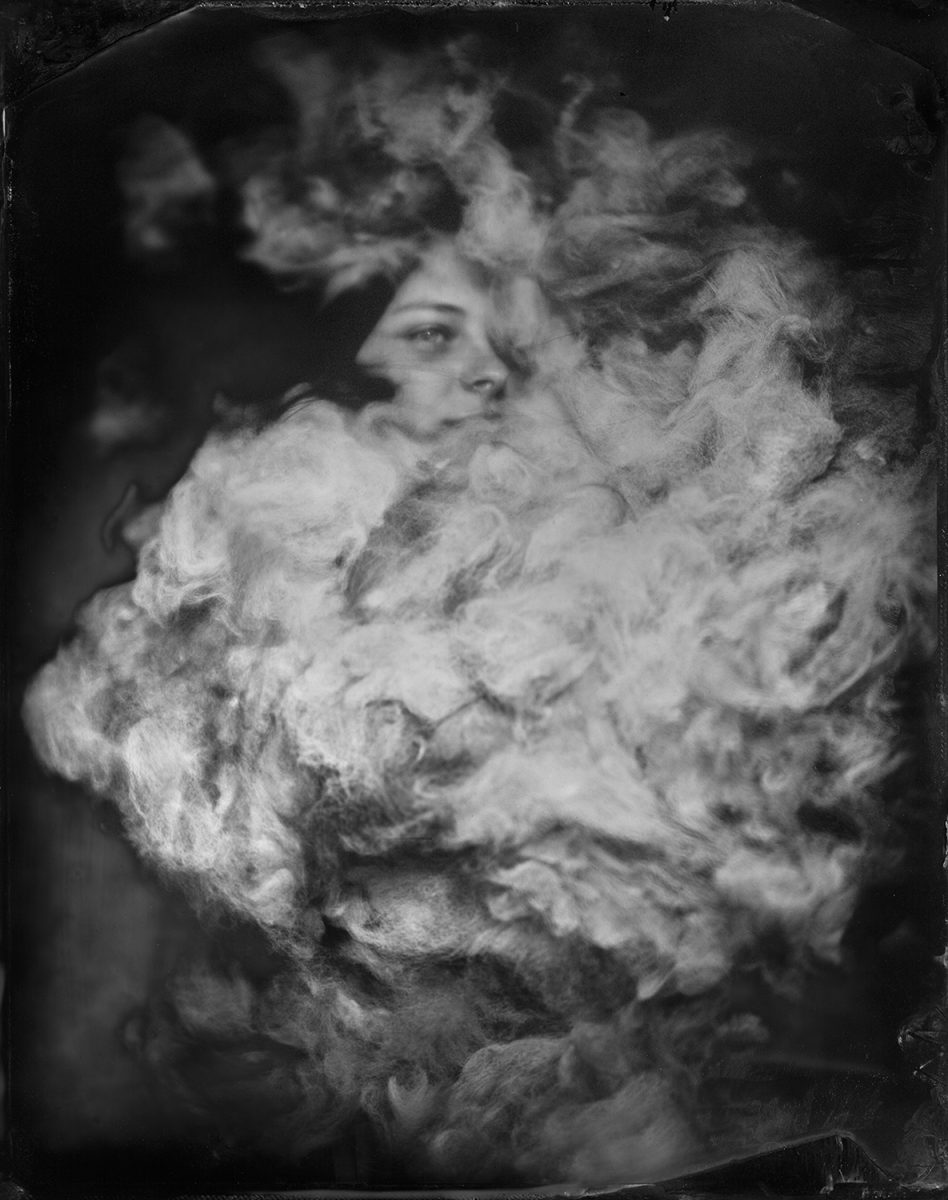Francis O’Shaughnessy
I enter the landscape and fall in love
« Usually, my sessions are long and arduous, because I want my models to adopt an attitude that’s more performative than theatrical; which isn’t always easy in the forest, because there are so many flies in front of the camera. »

In the project I enter the landscape and fall in love, I focus my research on the construction of the audacity of living in my vision of portraiture in landscape and portraiture of landscape. I attempt to create dialogues between performance art and photography by orchestrating stagings that originate in visual installation worlds. I create scenographic spaces that evoke fictions enveloped by nature. My body of work, in perpetual (re)questioning, speaks of human beings: their loves, their dreams, their nonsense and their quest for meaning.
Wet collodion is a primitive black-and-white photographic process used to make prints on aluminum plates. An image is created using a bellows camera, followed by various manipulations in the darkroom. For Francis O’Shaughnessy, this medium becomes a place of experimentation for architecting dreamlike tableaux, not to capture what he thinks, but to understand what he thinks. By combining ancient processes with today’s technology, he revisits the knowledge of the past to push back the limits of plastic photography and its current concepts.

During COVID-19, it was difficult for him to continue his photographic research, since he couldn’t receive models for my projects. He came up with the idea of setting up a bellows device in front of a computer to convert digital representations into wetplate collodion. In this way, he brought together ancient processes with today’s technology. He wanted to revisit earlier productions and reinterpret prints made between 2007 and 2018.
He then made his compositions more complex by mounting them on several plates and experimented with all kinds of ways of modifying his images. For example, he replaces the distilled water in his chemical formulas with rainwater, river water, snow or urine to provoke accidents and serendipity in his research. Questioning photography is like asking the question: what is art? Sometimes I witness revelations, sometimes nothing happens.
Known for his singular approach, his exploratory studies in visual poetry reveal the concrete signature of his imagination. For him, it is truly a poetic act to capture feelings of escape and elevation of the spirit, then transform, metamorphose or reinvent them into photographic compositions.


Born in 1980 in Canada, lives and works in Montreal.
Francis O’Shaughnessy is a Quebec artist-researcher and curator of Laotian origin, working with photography and performance art. He obtained a Master’s degree in visual arts from the Université du Québec à Chicoutimi in 2007, and since 2016 has been a Doctor (Ph.D.) in art studies and practices from the Université du Québec à Montréal, with a specialization in performance art.
Since 2002, he has pursued a career as an artist and academic. In art, he pays particular attention to productions rooted in explorations of portraiture in landscape. He was recently awarded the People Vote Award by the Refocus Awards (2023) and won the Luxembourg Art Prize (2021) for his wet collodion photographic creations during the pandemic. He was also nominated for the Prix National de l’Audace in 2013 for his underground photographs taken in silver mines in France. His academic training has enabled him to write numerous critical articles on art in various specialized magazines, catalogs and monographs in Canada, the United States, France and Brazil.

His work in all disciplines has been shown in over 30 countries in Asia, Europe and the Americas; including the Musée National des Beaux-Arts in Quebec City, the Museum of Contemporary Art in Krakow, the Museum of Contemporary Art and Sculpture in Oronsko, Poland, the International Art Biennial in Cerveira, Portugal, the Museum of Fine Arts in Alūksne, Latvija, Latvia, the Desarrollo Center for Visual Arts in Cuba and the Museum of World Culture and Art Museum in Boras, Sweden. His work can be found in private and institutional collections.
He is currently a professor of visual arts and teaches analogue photography at Cégep Marie-Victorin in Montreal (Canada).


« Having the audacity to go right up to the edge of catastrophe sometimes brings out discoveries, elements that spark off a (re)new in my practice. Defects allow me to formulate images that hold a certain spellbinding power. That’s what keeps me on the edge of my seat: exploring paths that completely change the way I look at things ».


« In the forest, there’s always something standing in the way of your ideas. You have to be resourceful and imaginative to get things done. It’s a real challenge to venture into the wild unknown, because the forest is both a wonder and a trap ».

